DAY 20 - A DAY IN ODENSE. Friday 13th May, 2022
Although the forecast for today was rain, the day started out beautifully. The kids were up early and once they were fed, Maria and Pete took them for a little walk down the road to see and pat the horses. The countryside around here is just gorgeous. All lush green, some flowering canola groups, and just real country. It is so quite and peaceful... no busy noises and we wished that we could have booked to stay for a week...
 |
| Getting up close and personal with the horses. |
The Danish Railway Museum or Danmarks Jernbanemuseum as it is know in Denmark is the largest railway museum in all of Scandinavia and it is Denmark's national railway Museum. It is situated on the backside of the Modern Central Station in Odense and is one of the city's main attractions.
By the time we arrived, paid and got inside it was after 11am. The boys are used to having lunch around 11.30am and both were complaining of being hungry, so we thought we should feed them first before checking anything out.
 |
| Denmark's National Rail Museum |
The museum houses an original roundhouse building from 1954. Here you can experience the history of the railway in Denmark up close. They have 21 train tracks with iconic locomotives and carts as well as a display of the royal wagons They also have Denmark's oldest working steam engine from 1868. It is a very hands on Museum where you have access to many of the museum's locomotives and carts.After our lunch, one of the first things we did was take the children to the a awesome Children's section in the Museum, a play ground representing a rail station, along with rail lego and dress ups and the boy had a ball...
 |
| All ready for the job... |
The boys loved the Children's Train Station, which is a children's railway station. Outdoors, there was a new, large, learn and play area with a large steam locomotive and a water tower from which you can slide. They also had mini train rides that Theo in particular enjoyed riding on. It rides both inside and outdoors. In wet weather it runs indoors and on fine days it is outdoors. Even though it was quite overcast, whilst we were there, the rain didn't deter the train from it's outdoor circuit today. They also had a great brand new mini-train plant, staged with child-sized historical railway environments. You start the trip from Copenhagen Central Station. Along the way, you drive over the old Little Belt Bridge, through a Great Belt Ferry and a small railway town. The mini trains are modeled from a real train such as the MY locomotive and the MY jet train. Great activities for the kids and our kids loved it...
 |
| Theo and Elliot had a ball with all the Duplo. |
On some of the models, the roofs have been removed so you can see
right into the compartment and the Mars upholstery in First Class. There
are also a number of models of the foreign trains that ran on Danish
rails, for instance the direct train service to Moscow. These were quite fascinating and we really could have spent a lot more time pouring over them, except we had two keen little boys who wanted us to move on.
 |
| Amazing model train display |
There was a very interesting display on the building of the Great Belt Fixed Link. This is one of the largest bridges in the word, and we got some inking of the mammoth work that went into this structure when we drove over the Great Belt by car on our way to the Odense. Having driven over the bridge we were very interested to read all about it's construction. The structure incorporate the Eastern Bridge (a large suspension bridge), Western Bridge (a low-level bridge) and the Eastern Tunnel for the railway (an undersea bored tunnel). The complete link between Zealand and Funen is 18kms long and was built over a ten year period between 1988 and 1998.
The Link interconnects the regions of Denmark and has made getting around
Denmark a lot easier. The Eastern Bridge – the big, light suspension bridge
with its characteristic cable profile and two 254 m pylons are the highest
points in Denmark and bear the cables whose free span of 1,624 m is the second
longest in the world. The Eastern Bridge itself is 6,790 m long, with a passage
height of 65 m.The Eastern Bridge has become a popular symbol of Danish
expertise and sound craftsmanship.
The East Tunnel for trains at 8,024 m long is Europe's second longest bored
tunnel after the Channel Tunnel between France and England.
Half way across the Great Belt is the island of Sprogo, where the bridges and the tunnel meet. The little island and its lighthouse have played ever changing roles in the history of Denmark and it is all documented at the Railway Museum. A fascinating read..
Another one of the interesting displays was called the Orange Rai-Car Mover and the Olsen Gang.
The mini exhibition The orange rail-car mover and the Olsen Gang is centred on DSB tractor no. 57. Visitors may enter the driver’s cab and also take their photograph together with the Olsen Gang and the rail-car mover at a life-size cardboard cutout of the three gang members.
In ‘The Olsen Gang on Track’, the three gang members use the shunting tractor as an implement to steal millions of Danish kroner. The tractor is almost the fourth gang member in this much-loved comedy. As always, everything is going very well at the beginning. Egon has learnt the timetable off by heart and is able to navigate between the large trains. Benny deftly steers the tractor, while Kjeld changes the points. All is going to plan, until the Danish State Railways changes to the summer timetable and all the train times change.
You can watch clips from ‘The Olsen Gang on Track’ (in Danish). The film is put into the context of railway history, and visitors will learn about the importance that particularly films and TV series have in relation to our knowledge about trains and railways.
Denmark’s railway history spans almost 175 years – since 1847 – and safety has always been at the top of the agenda. Over the years, safety has steadily improved. Initially dependent on people, railway safety has increasingly become automated, eliminating the human factor to the extent possible.
The Safety! exhibition explores what the railway operators learnt from accidents, such as the express train accident near Odense in 1967 and the Sorø accident in 1988. It also provides detailed information on the operation of manual, mechanical and electronic safety systems. All very interesting and fascinating.As we came down to inspect the bottom level of the Museum, there was a call over the loud speaker system to let folk know that the model train would soon be departing outside for a train ride. Pete was keen to take Theo for the ride so we headed outdoors to line up.
 |
| Train arriving at the station to take the little passengers for a ride... |
 |
| One very keen little passenger... |
 |
| Waving good bye to his Moppy as they take off... |
Before the bridge across Little Belt (1935) and the Great Belt Fixed Link (1997) were built, the different parts of the country were linked by ships and ferry services. With the construction of railway lines across the country, a new type of ferry was needed – the train ferry. The exhibition on the Danish railway ferries includes models of more than a third of the ferries that the Danish State Railways (DSB) has owned.
 |
|
You can have a go at our ship’s wheel and experience how it feels standing at the helm of a ferry. |
There were no railway ferries for the first few years after the construction of the railways in Jutland and on the island of Fyn. When passengers had to cross one of the belts, they got off the train at the harbour and walked on board a ship. On the other side of the belt, passengers got off the ship and got on another train. It was time consuming and also hard to plan efficiently.
In 1872, Denmark got its first train ferry, named ‘Lillebelt’; it could carry railway carriages and sailed on the route between Strib and Fredericia. The train ferry route across the Great Belt opened in 1883.
The ferry models are quite small – for example 1:87 or 1:100 – but fascinating, as they are exactly like the originals down to the smallest detail. The models cover the entire period where there were train ferries in Denmark: from the oldest model of ‘Lillebelt’ to the Great Belt ferries which many people still remember, such as ‘Dronning Ingrid’ and ‘Arveprins Knud’.
The Danish Railway Museum also gave us the unique opportunity to inspect four royal saloon carriages. Experience this extraordinary collection which provides information not only on royal travel but also on the heights of railway technology at different points in time.
All the saloon carriages represent the pinnacle of craftsmanship at the time of construction. They were built with clear flair for craftsmanship, detail and design, for members of the Royal Family, from Frederik VII onwards, traveled in style when they traveled by train.
Since the infancy of the railway in Denmark, the Royal Family has traditionally traveled by train. For the first few years, the Royals travelled in a First Class carriage, but later they got their own saloon carriage.
The oldest is from 1854 and
it was built for Frederik VII to travel on the Schleswig line from Flensburg to
Husum. For its time, it was extraordinarily magnificent.
The second oldest is from 1871 and was built for Europe’s father-in-law,
Christian IX. Notice the ceiling and walls of the carriage. They are covered in
light silk coteline, while the furniture is upholstered in red silk brocade.
The carriage was in use till 1900, when it was replaced by the S 8.
The S 8, as it is called, was a very large carriage when it was built, measuring 16.75 metres in length. All the woodwork is dark polished mahogany. All metal furnishings, door handles, etc. are produced in gilt chased bronze. It could not get any more opulent. We also got to inspect the beautiful saloons, of which the middle one could be converted into a sleeping compartment – modern lavatories and luxury furniture of its time, here in green silk brocade.
The fourth carriage, referred to as S 1, is a modern steel carriage from 1937. Its interior is attributed to a sketch by the then Crown Prince Frederik (Frederik IX), but externally it resembled the new passenger coaches at the time. It has sleeping compartments for the King and Queen as well as their staff. The S 1 was comprehensively renovated in 1983/84, where also the interior was modernised following instructions from HM Queen Margrethe II. We noticed the inlaid wooden coffee table, featuring an unusual yet characteristic pattern. The carriage was used until 2000.
The exhibition provides us with the opportunity to look into the royal saloons and admire the many beautiful details. The carriages are exhibited more or less in the condition that they were in when they were decommissioned. The oldest carriage, however, is entirely unchanged. Having served as a royal carriage, it was used for other purposes and ended its days as a summer cottage in Thy, in the north of Jutland. This royal carriage has been preserved in the condition that it had when it was given to the Museum
The Roskilde Line, the first railway line in the kingdom, ran between Roskilde and the capital, and this new mode of transport became an overnight success. This 32-kilometre journey which used to take several hours was now reduced to 53 minutes, and suddenly many more people than ever before were able to travel to Roskilde or Copenhagen.
However, the line also assumed a different significance – a significance which was to prove crucial to the country’s future development. The line was also used to transport large quantities of goods and livestock.
The exhibition also highlights central events and changes through the years. The huge construction works which were performed manually in the early years and icons such as the red express train and the Little Belt Bridge are placed in a historical context. Visitors also have the opportunity to experience what it was like being a railway employee during World War II and the German occupation of Denmark.
 |
| Terribly uncomfortable wooden seats.. |
Just before we were due to leave, there was another call for the kids train ride outside. Theo was keen to go again but wanted Poppy and Elliot to come with him this time, so we headed back outside so that Poppy and Elliot could go for a ride with them also...
 |
| Going for a train ride with Poppy |
We have really enjoyed our visit to this amazing Museum. It was not something on our bucket list but I would recommend it and would probably come again one day without kids as there was so mucy more to read...
 |
| Elliot loved the trolley.. |
 |
| The trolley's kept them amused whilst Steve went and got us all an ice cream.. |
There was also a pretty spectacular children's playground out doors also. I think it is one of the Montrum design playgrounds, well at least it looked like one of them. Unfortunately we didn't have time to explore it today. Elliot was well and truly ready for a nap so Pete and Maria thought it best to head towards home...
 |
| A great day out at the Danish Railway Museum... |
Pete suggested to us, that we should try and check out one of Thomas Dambo's great giants. This artist has created 16 of these giants all around Denmark as well as in other countries in the world. We had read that there was one in Odense so we sent out to find it...
There is never an actual address for these giants, just a general proximitiy and then it is up to the adventurer to head into the forest to find them. His whole idea of building them in the forest is to get people outdoors.
We headed off to find the giant in Odense and found that it wasn't too far out of town. It had been built in an industrial area and wasn't even too far from the road. There was a little wooden path to it which we managed to find easily enought... The area was quite swarmpy, so we were pleased that we had a wooden boardwalk to walk along...
Unfortunately we weren't the only ones there. There was another family who were enjoying afternoon tea in the little cottage.
 |
| Heading to find the giant in Odense |
 |
| It was quite swampy getting there... |
Wow what a surprise, it was even better than I thought it would be...
Thomas Dambo is a Danish artist who works with recycled materials. Over the past three years, he has made 25 big recycled sculptures around the world, with 16 of them being in Denmark, and six of those hidden giants in his home town of Copenhagen...
He builds his sculptures in some of his favourite places around the city, places where people don't go to often, because it is off the beaten track. The sculptures can only be found by using a treasure map, or a poem engraved into a stone near each sculpture and these give the hints on how to find the giants...
He has made all the sculptures from recycled wood. Mainly from 600 old pallets, an old wooden shed, a fence and what ever else he has been able to scavenge. Each of his sculptures has been made with the helpf from local volunteers, and each of the sculptures was named after one of the volunteer.
We nearly didn't go looking for the giant, but I am so pleased that we did, to see it in real life and the size of it was even bigger than I had imagined.
We decided to have a little drive around the river and check out the sounding district before heading home.
 |
| We saw a beautiful white swan sitting on her nest. |
By the time we got home it was dinner time. Pete had been to the shop on his way home and bought some items of food to make some pizzas for us for dinner.
AFter dinner, Steve decided to go for a bit of a walk around the neighbourhood. As our evenings are long, there was plenty of time for such a walk. The countryside around here is beautiful and he got some lovely photos. It is very rural.
 |
| Our AirBnB on Funen.. |
 |
| Our garden |
He continued to walk into town and checked out the local kirke.
It's been a wonderful day. Tomorrow we are going to go and visit a castle. I have been looking forward to this since we arrived in Denmark.
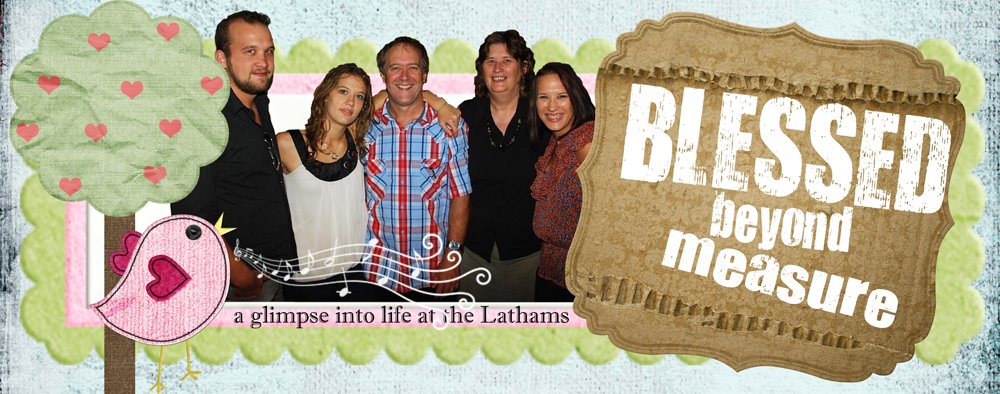




































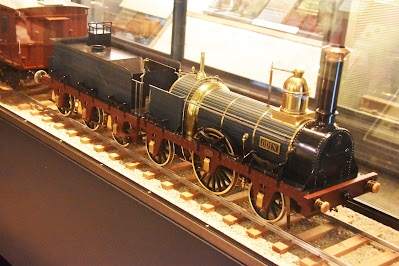















































































































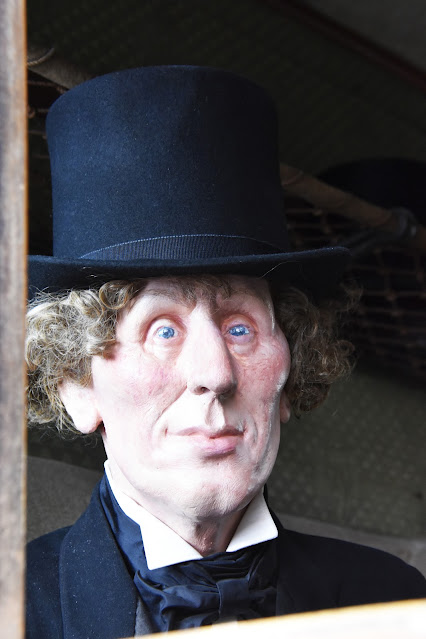

























































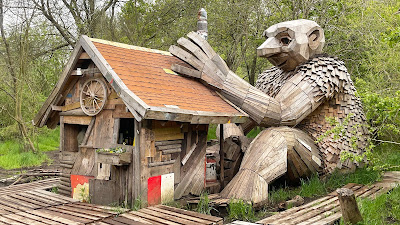

















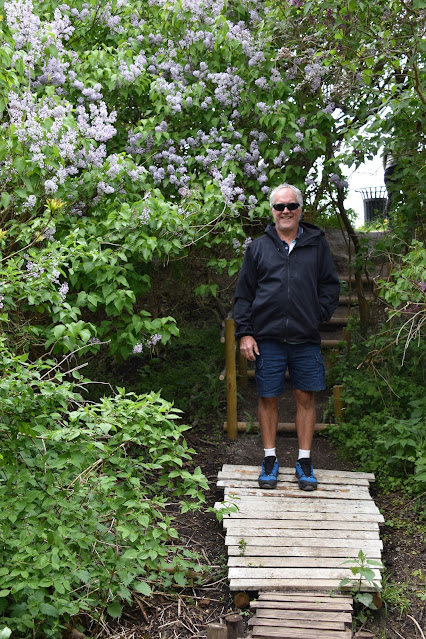
























0 comments:
Post a Comment